Flare Systems
Since the 1980’s, key staff of Nutara have been responsible for the design, fabrication, installation, commissioning and maintenance of numerous flare systems including some of the most stringent and demanding applications. Nutara designs are optimized towards flexibility, robustness, low emissions, high thermal efficiency and reliability.
With over 100 flare systems in operation in over 20 countries Nutara can demonstrate a solid track record. Nutara’s extensive experience in flare design has resulted in a comprehensive range of elevated and ground flare systems and ancillaries to cover the needs of all major industries.

- Low and High Pressure Utility (Pipe) Flares
- Air assisted Flares
- Steam assisted Flares
- Gas assisted Flares
- Sonic Flares
- Speciality flares for Ammonia, H2S, LNG and lean waste gas
- Mobile Flare systems – for purchase, lease or rental
- Venturi Flame Shields protecting the flare from flame lick and improving combustion efficiency
- Ancillaries such as pilots, ignition systems, pilot detection, KO drums, water seals, molecular seals and conical purge seals
- Supporting structures including derricks, demountable riser type derricks, guy wire support systems, plus self supporting Flares
- Enclosed ground flares with single or multiple burners
- Temperature controlled combustors and thermal oxidisers
Nutara aims to be a long term partner to all our clients and provides full aftermarket support for all operation, maintenance and intervention requirements.
We can also provide for the inspection, maintenance, refurbishment and replacement of any flare system or components and can supply in some cases, rental flares during maintenance interventions.
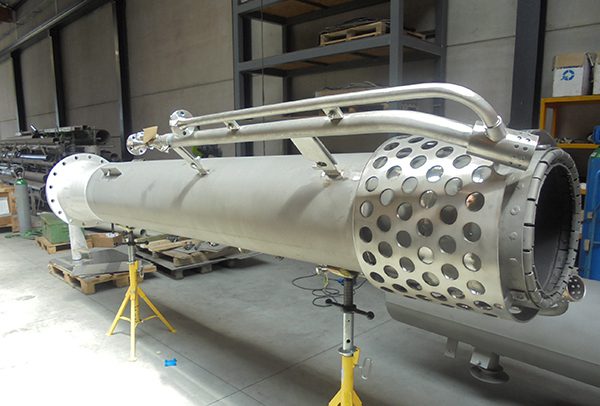

Utility Flares
Utility Flares (Pipe Flares) are the most basic flare design available, to provide a robust, reliable and flexible solution for the flaring of large volumes of low pressure waste gas when smokeless operation is either not required or can be achieved without an assisting medium (like steam, air or gas). Reliable operation at both full load and partial load is possible.
Key features
- Flame holders fitted on the periphery of the flare tip ensure stable operation These flame holders provide a zone of recirculated flue gases/air, which prevent flame lift off, from the flare tip
- Wind deflectors to prevent flame impingement, due to flame lick in the low pressure zone, downwind of the tip
- Pilot burner arrangement to further stabilise the flame
- Use of high grade alloys to enhance lifetime of the flare tip
- Use of dynamic seal to reduce purge gas requirements and prevent flash back
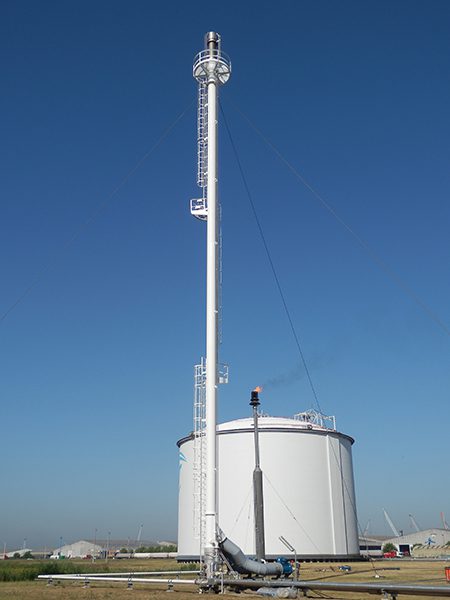
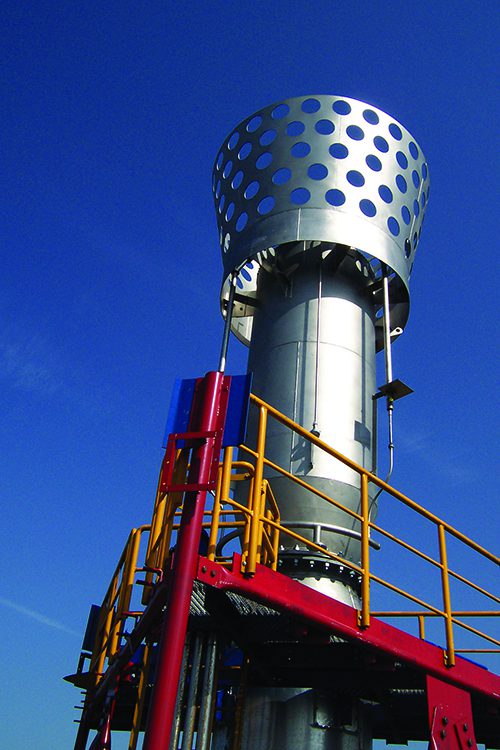
Key advantages
- Low investment and operational costs
- Low maintenance costs with the use of high grade alloys and the robust design
- Reliable and stable flaring in a wide range of operating conditions
- Large turn-down ratio
Applications
- Upstream oil & gas sector
- LNG terminals and NG compression stations
- Chemical and petrochemical industries including refineries
- Food processing industries
- Municipal solid waste treament (biogas and landfill gas) plants
Air Assisted Flares
Air assisted flares enable the smokeless combustion of low pressure waste gases. Air (or Gas) assisted flares can be used when no steam is available on site.
Air assisted flares use forced draft Air or Gas to create turbulence ensuring that sufficient primary combustion air is supplied to the flame.
The amount of air and hence the size of the tip and riser depend on the degree of smokeless operation required and the maximum flow for smokeless operation.
Key features
- Proprietary design to maximize the mixing of waste gas and air streams and to create turbulence in the combustion zone
- Variable speed fans, to supply the optimal amount of Air (Gas)
- Use of wind deflectors if required, to prevent flame impingement
- Flame holders around the periphery of the flare tip to ensure stable operation
- Use of high grade alloys to enhance lifetime of the flare tip
- The use of combustion/mixing air to cool the flare tip and thus enhance its lifetime
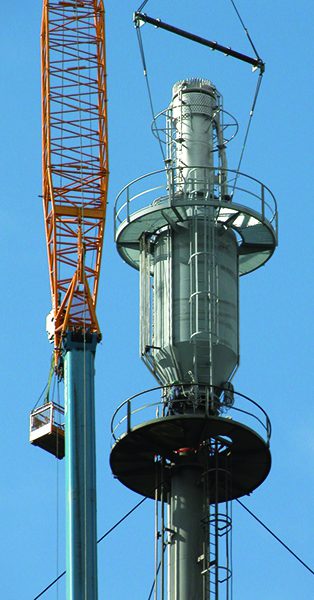
Steam Assisted Flares
Steam assisted flares enable the smokeless combustion of low pressure waste gases at installations where high pressure steam is available.
A steam manifold along with jets integrated in the flare tip design, inject high pressure steam into the flame.
The steam jets entrain ambient air at the base of the flame providing additional turbulence and resulting in smokeless combustion. Steam can also act as a catalyst in the overall combustion process.
Key features
- Proprietary design of the steam manifold efficiently injects steam into the flame, either internally or externally to the flare tip
- Steam Manifold is remote from the flame to lengthen the lifetime of the flare tip
- Wind shield placed around the outer steam manifold to avoid flare tip damage
- Flame holders around the periphery of the flare tip to ensure stable operation
- Use of high grade alloys to enhance lifetime of the flare tip
Key advantages
- Smokeless operation under a wide range of operating conditions
- Smokeless flaring of high molecular weight gases
- Long tip lifetime due to steam cooling resulting in lower operation and maintenance costs
- Reduced radiant heat for a given capacity
Applications
- Mid and downstream oil & gas sector
- Chemical and petrochemical industries including refineries
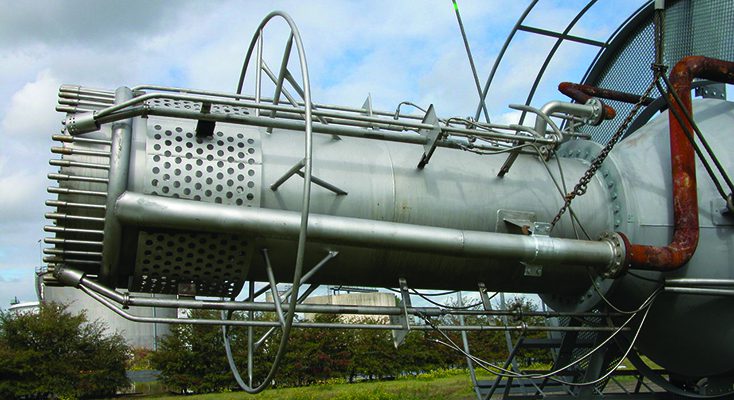

High Pressure Flares
High Pressure Flares use the actual pressure of the waste gas to create turbulence, entraining combustion air into the base of the flame to obtain smokeless combustion. Nutara has a full range of high pressure flares including HP pipe fares, sonic flares and HP assisted flares. HP sonic flares are the ideal solution when low radiation along with smokeless operation are desired.

Key features
- Proprietary design of HP sonic gas nozzle which maximises the entrainment of ambient air into the combustion zone
- Wind shield placed around the HP gas nozzles to prevent flame pull down
- Use of high grade alloys to enhance lifetime of the flare tip
Key advantages
- Smokeless operation at low heat radiation
- 100% smokeless turn down possible for air assisted HP flares
- Lower flare stack heights
- No need for any assist medium
- A low pressure flare can be integrated with the HP sonic flare to provide both HP and LP gas flaring in a single flare tip
- Suitable for smokeless combustion of waste gas with entrained liquids
Applications
- Upstream oil & gas sector
- Chemical and petrochemical industries including refineries
- Pipeline transport
- LNG and NG terminals and compressor stations
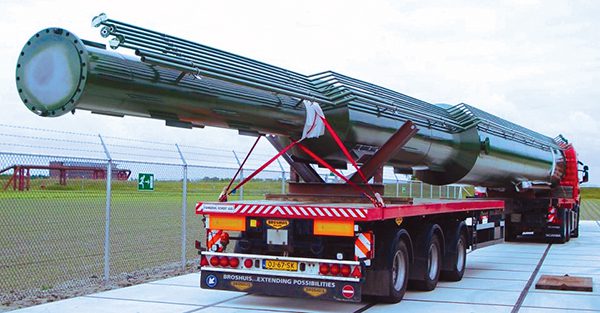
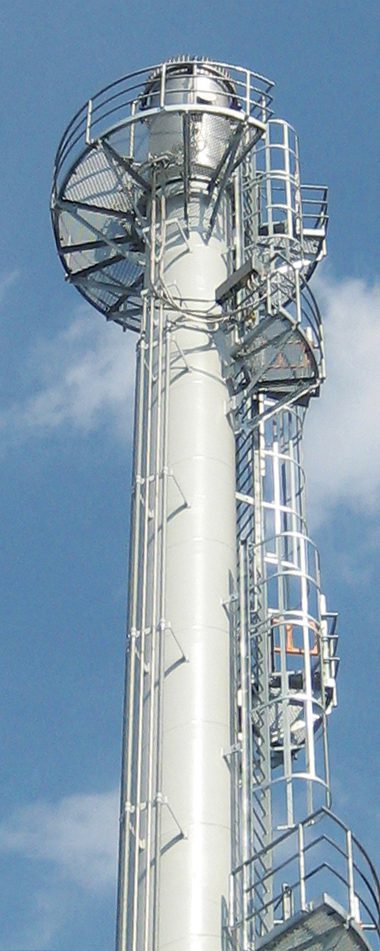
Ring-of-Fire Flares
Industries will generate Low CV waste gases, which are either difficult to burn or can contain insufficient energy to self-sustain the combustion process.
For these applications, Nutara developed the proprietary "ring-of-fire" Flare Tip. This tip has a ring of flame around the central waste gas tip thus ensuring complete oxidation of the low calorific waste gas. Both air assisted and non-assisted flare burners are available.
Key features
- Proprietary design of the "ring-of-fire" flare burner to ensure mixing of the waste gas with the ring of flames
- Wind shield placed around the ring to prevent flare tip damage
- Flame holders around the periphery of the gas rin to ensure stable operation
- Flame holder placed around the gas ring
- Use of high grade alloys to enhance lifetime of the flare tip
Key advantages
- Smokeless combustion of low calorific waste gases
- Stable and reliable combustion
- Long life-time
Applications
- Flaring of low calorific waste gases e.g. gas with high CO2 or N2 content
- Chemical and petrochemical industries including refineries
Specialty Flares
In addition to the generic flare systems described above, Nutara has developed a full range of speciality flares for certain specific applications or industries, which includes
- Ammonia Flares
- H2S Flares
- Sour gas Flares
- Cryogenic and LNG Flares
- Biogas and landfill gas Flares
- Mobile flares, trailer mounted, transportable or free-standing
- Ring-of-fire flares for waste gas with high CO2 or N2 content

Support Structures
The optimal design of flare supporting structures is dependent on many factors, including height, capacity, location, plot size, climatic conditions and riser dimensions.

Nutara can supply a complete range of support structures for non self supporting flares:
- Guy wire support systems
- Derrick structures including demountable risers and multi-stage flares and risers
- Guy wire derrick supported flares
